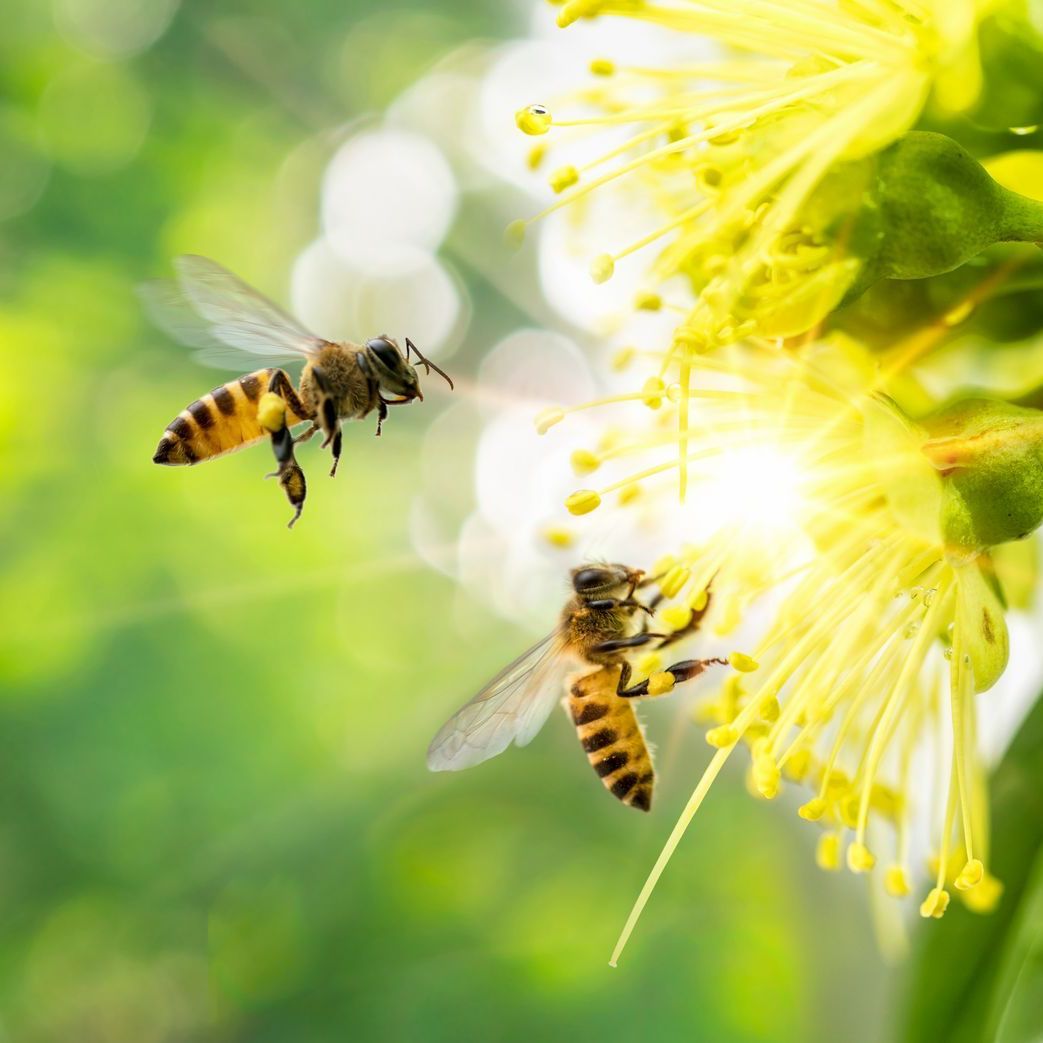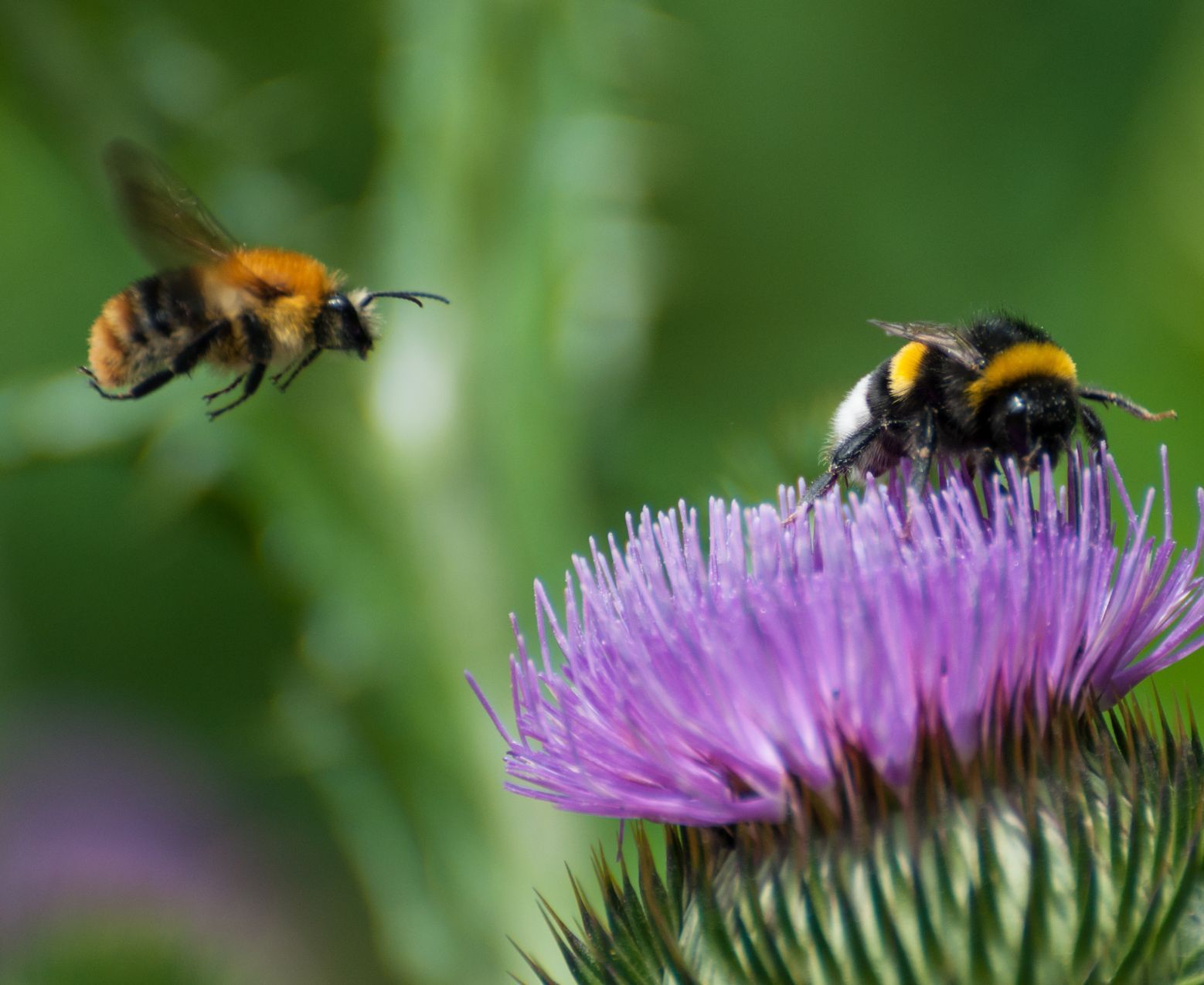Bees In North Texas

Carpenter Bee
- Appearance - Carpenter Bees come in sizes ranging from small to large. The larger of the two genera is classified as Xylocopa, whereas the smaller varient is classified as Ceratina. The Large Carpenter Bee is most commonly the one to make damages to properties. Let's break down some of their appearance differences.
- Large Carpenter Bee(Xylocopa)
- Larger of the two species ranging from 12-25mm in length
- Appearance is very close to Bumble Bees
- Yellow colored hairs on legs, head, thorax, and abdomen similar to Bumble Bees
- No hairs seen on the top of the abdomen
- Small Carpenter Bee(Ceratina)
- Typically less than 8mm in lenght
- Darker in color compared to Xylocopa
- Some form of yellow markings on the face
- Diet - Commonly feeds on Nectar/Pollen.
- Wood Destruction - Xylocopas are known to damage the following
- Decks
- Doors
- Fences
- Eaves
- Windows
- Post
- Furniture
While there is a common misconception that Carpenter Bees eat wood, it is actually to make a place for females to lay eggs, and feed the eggs.

Honey Bee
- Social Structure:
- Honey bees are highly social insects and live in colonies that can consist of tens of thousands of individuals.
- The colony is organized into three castes: the queen, workers, and drones.
- Queen Bee:
- The queen is the only sexually mature female in the colony.
- She is responsible for laying eggs and can lay up to 2,000 eggs per day.
- The queen produces pheromones that help regulate the behavior and activities of the colony.
- Worker Bees:
- Worker bees are females that are not sexually developed.
- They perform various tasks within the hive, such as nursing the brood, foraging for nectar and pollen, and defending the hive.
- Worker bees undergo a series of tasks as they age, starting as nurse bees and progressing to roles such as foragers and guards.
- Drone Bees:
- Drones are male bees whose primary purpose is to mate with a queen from another colony.
- Drones do not have stingers and do not participate in typical hive activities like foraging.
- Hive Activities:
- Honey bees engage in various activities within the hive, such as producing honey, beeswax, royal jelly, and propolis.
- Honey is produced by worker bees collecting nectar from flowers, which they transform and store in honeycomb cells.
- Pollination:
- Honey bees are crucial pollinators for many flowering plants, including numerous crops.
- Their pollination services contribute to the production of fruits, vegetables, nuts, and seeds.
- Importance to Agriculture:
- Honey bees play a vital role in agriculture, contributing to the pollination of a wide variety of crops.
- Their economic value is substantial, as they support food production and biodiversity.

Bumble Bee
- Physical Characteristics:
- Bumble bees are generally larger and hairier than honey bees, with a robust and fuzzy body.
- They typically have black and yellow stripes, although some species may have orange or red markings.
- Their bodies are covered in dense hair, providing insulation and aiding in the collection and transport of pollen.
- Social Structure:
- Bumble bees are social insects, living in colonies with a queen, workers, and drones.
- The colony is annual, meaning it lasts for only one season, and the entire colony, except for the newly mated queens, dies in the fall.
- Nesting Behavior:
- Bumble bees nest in various locations, such as abandoned rodent burrows, grassy tussocks, or other sheltered places.
- The queen constructs a small waxen pot for the initial brood and lays eggs inside.
- Bumble bee nests are much smaller than honey bee hives.
- Foraging Behavior:
- Bumble bees are important pollinators, collecting nectar and pollen from flowers.
- They have a unique behavior called "buzz pollination" or "sonication," where they vibrate their flight muscles to release pollen from certain flowers.
- Diet:
- Adult bumble bees primarily feed on nectar for energy.
- Pollen is collected and mixed with nectar to form a protein-rich food source for the developing larvae.
- Importance As Pollinators
- Bumble bees play a crucial role in pollinating a wide variety of plants, including many crops such as tomatoes, blueberries, and squash.
- Their foraging behavior and ability to visit a diverse range of flowers contribute to effective pollination.